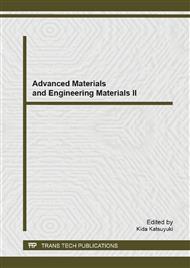p.909
p.913
p.917
p.921
p.925
p.929
p.933
p.937
p.941
A Magnetic-Assistance System as a Super Finishing Following Turning Machining
Abstract:
A design system using a magnetic force with high efficiency to assist discharging dregs out of the electrode gap during the electrochemical finishing on the surface finish process that follows turning machining process is investigated in the current study. Through the equipment attachment, magnetic-assistance during electrochemical finishing can follow the turning process on the same machine. This process can be used for various turning operations. Among the factors affecting electrochemical finishing, the magnetic-assistance is primarily discussed. The experimental parameters are magnetic strength, distance between the two magnets, current rating, on/off period of pulsed current, feed rate of workpiece, and rotational speed of workpiece. A higher current rating with magnetic-assistance reduces the finishing time and avoids the difficulty of dreg discharge. Providing a large magnetic field intensity or using a small distance between the two magnets produces a larger magnetic force and discharge ability and better finishing. A large rotational speed of the workpiece and electrode produces better finishing. Pulsed direct current can slightly promote the effect of electrochemical finishing, but the current rating needs to be increased. The magnetic-assistance during the electrochemical finishing process makes a great contribution in a short time by making the surface of the workpiece smooth and bright.
Info:
Periodical:
Pages:
937-940
Citation:
Online since:
April 2013
Authors:
Price:
Сopyright:
© 2013 Trans Tech Publications Ltd. All Rights Reserved
Share:
Citation:


